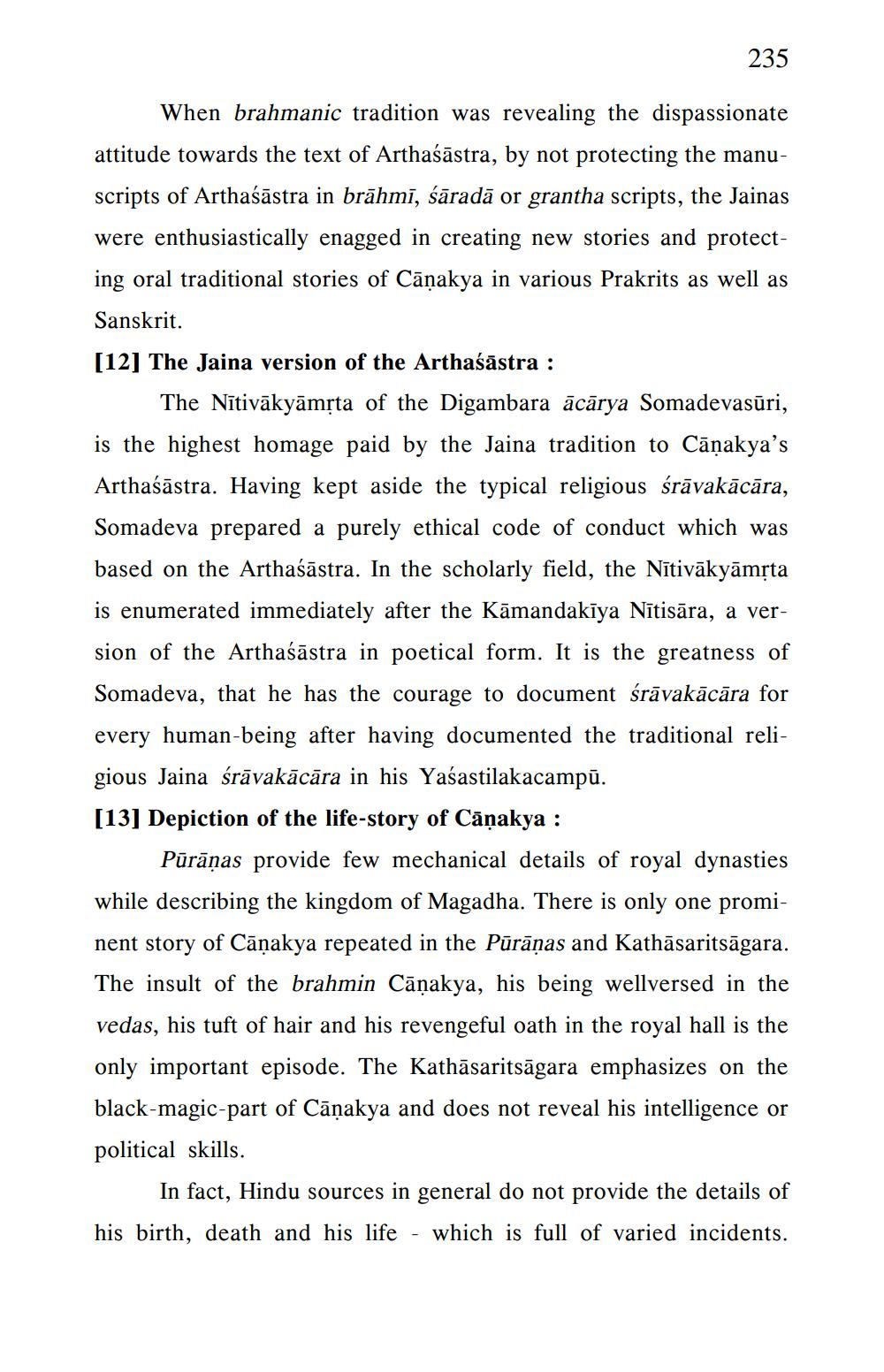________________
235
When brahmanic tradition was revealing the dispassionate attitude towards the text of Arthaśāstra, by not protecting the manuscripts of Arthaśāstra in brāhmī, śāradā or grantha scripts, the Jainas were enthusiastically enagged in creating new stories and protecting oral traditional stories of Cāņakya in various Prakrits as well as
Sanskrit.
[12] The Jaina version of the Arthaśāstra :
The Nītivākyāmrta of the Digambara ācārya Somadevasūri, is the highest homage paid by the Jaina tradition to Cāņakya's Arthaśāstra. Having kept aside the typical religious śrāvakācāra, Somadeva prepared a purely ethical code of conduct which was based on the Arthaśāstra. In the scholarly field, the Nītivākyāmrta is enumerated immediately after the Kāmandakīya Nītisāra, a version of the Arthaśāstra in poetical form. It is the greatness of Somadeva, that he has the courage to document śrāvakācāra for every human-being after having documented the traditional religious Jaina śrāvakācāra in his Yaśastilakacampū. [13] Depiction of the life-story of Cāņakya :
Pūrāņas provide few mechanical details of royal dynasties while describing the kingdom of Magadha. There is only one prominent story of Cāņakya repeated in the Pūrāṇas and Kathāsaritsāgara. The insult of the brahmin Cāņakya, his being wellversed in the vedas, his tuft of hair and his revengeful oath in the royal hall is the only important episode. The Kathāsaritsāgara emphasizes on the black-magic-part of Cāņakya and does not reveal his intelligence or political skills.
In fact, Hindu sources in general do not provide the details of his birth, death and his life - which is full of varied incidents.




